You’ve read the previews. The ones that go team-by-team, group-by-group and overview the squads, the managers, the venues. There are a lot of them, but that’s good because they’re mighty useful at getting you up to speed on the lay of the land. An appetizer if you will.
But let’s be honest, what you really want to know is ‘outside my own team and maybe the glamour ties in Group F, which matches should I watch?’
Or, ‘I’m all about the drama. Give me cards, penalties and carnage. Where do I find that?’
Or maybe, ‘Which group stylistically matches up with my footballing philosophy?’
You have the questions. We have the answers.
By taking the data for each Euros team from their qualifying campaign and recent Nations League fixtures – totalling an average of 15 games each – we found the statistical quirks in each group to look out for this summer.
Whilst we know that these numbers will be influenced by the strength of their opponents during these games, this preview is meant to give you a thematic guide of what each group should bring. Besides, who doesn’t want a confidence booster knowing that England were shown red cards more often than any other team (0.2 per game)?
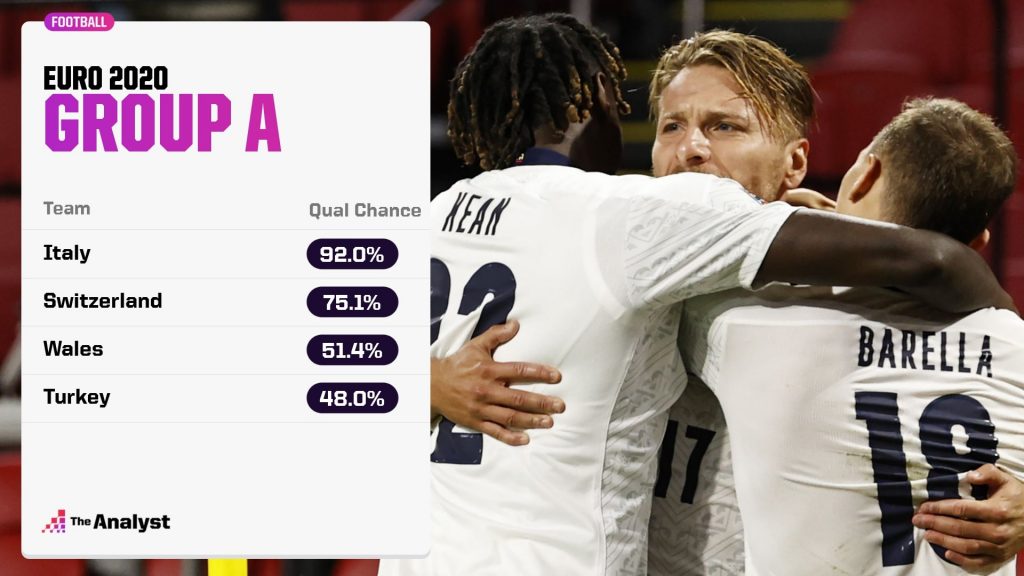
Group A – The Group of Cards:
Speaking of cards, Group A is the only group in the tournament where most of the teams were shown more than two yellow cards per game during the build-up to Euro 2020. Wales (2.64) and Turkey (2.19) accumulated the second- and fourth-most yellow cards per game out of the 24 teams to qualify for Euro 2020, with Wales racking up 37 yellow cards in the 14 games we looked at. In typically neutral style, Switzerland’s average of 1.77 brought the group average down slightly, but expect to see the referees busy nevertheless.
While the teams may be combative in the tackle, it is the defensive robustness of Group A that is even more impressive. Not only did they concede the fewest goals per game (0.64), they also conceded the lowest quality chances (0.93 xG conceded per game) in our sample.
Euro 2016 semi-finalists Wales keep some impressive company in these metrics. In terms of xG conceded per game, only Belgium (0.61), Spain (0.69) and France (0.76) conceded chances of lower quality than the Welsh (0.78).
True to their stereotype, it was their group rivals Italy that were next in the rankings, who also surpassed expectations to concede the fewest goals of all (0.38 conceded per game). Looking for goals? Look elsewhere (hint: try Group B).
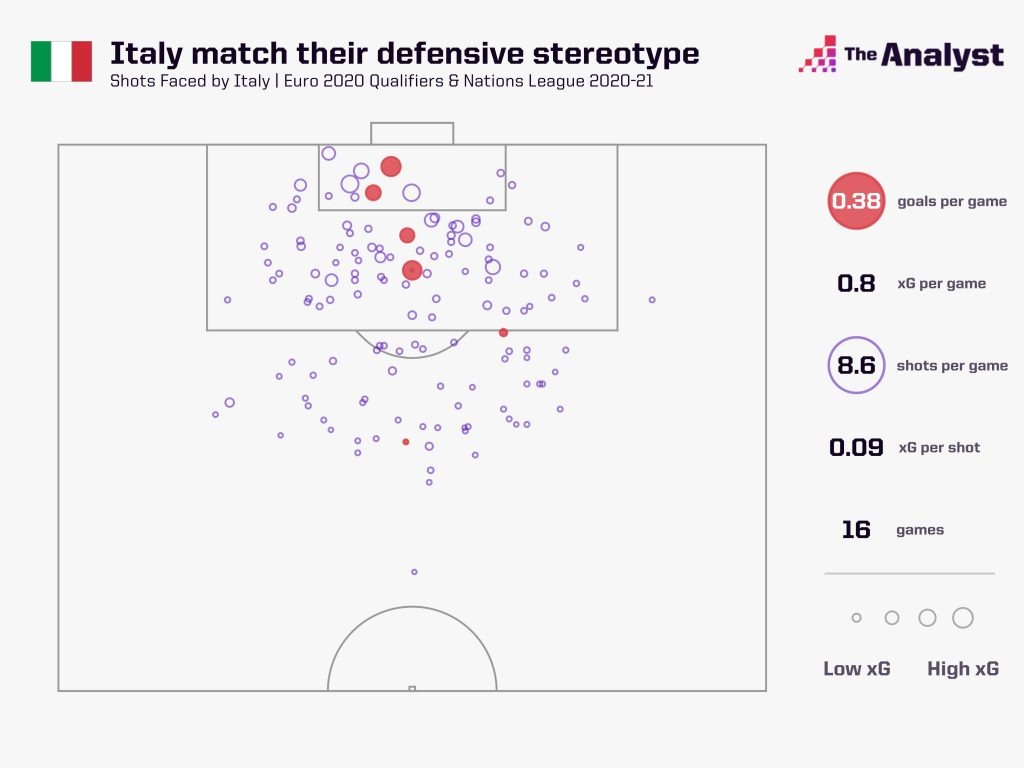
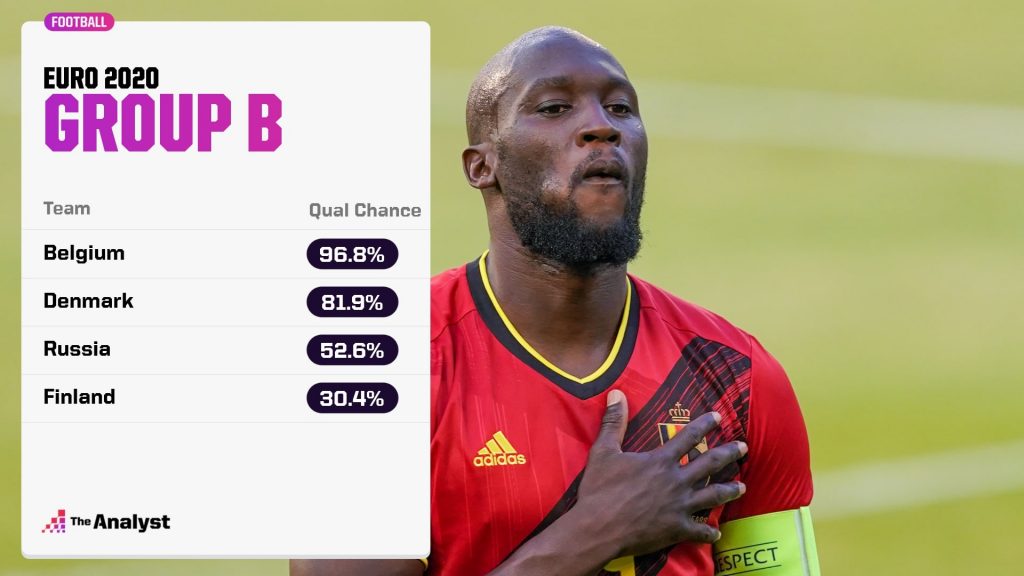
Group B – The Group of Goals (and Penalties):
Penalty drama and goalscoring your thing? Then look no further than Group B. The most geographically northern group of the Euros, Group B boasts two of the top-four goalscoring teams from the Euro 2020 qualifying campaign in Belgium (40 goals) and Russia (33). England and Italy occupied the other two spots with 37 goals each.
Impressive, but in the expected goals era we know you’re all wondering about the underlying numbers too. Nothing gets past you.
The Group B teams did in fact overperform expectation, scoring 2.5 goals per game from chances worth 2.1 goals per game. However, both their goals per game and xG per game were still higher than any other group, proving that this is the place for attacking firepower. We wouldn’t expect Belgium to continue scoring 3.5 goals per game in the tournament, but with the form that Romelu Lukaku has been in this season and the relatively weak opposition, it’s not impossible that they’ll get close to that in the group stage.
Not only can you expect goals (and expected goals), but you can expect penalties too. The 2018 World Cup demonstrated the impact that VAR had on penalties in international football, and it could play a crucial role again this summer.
No group won more penalties on average than those in Group B (0.26 per game). With a conversion rate that Bruno Fernandes would be proud of (96%), the only penalty not scored in 17 attempts was taken by Russia’s Artem Dzyuba against fellow Group B opponents Belgium.
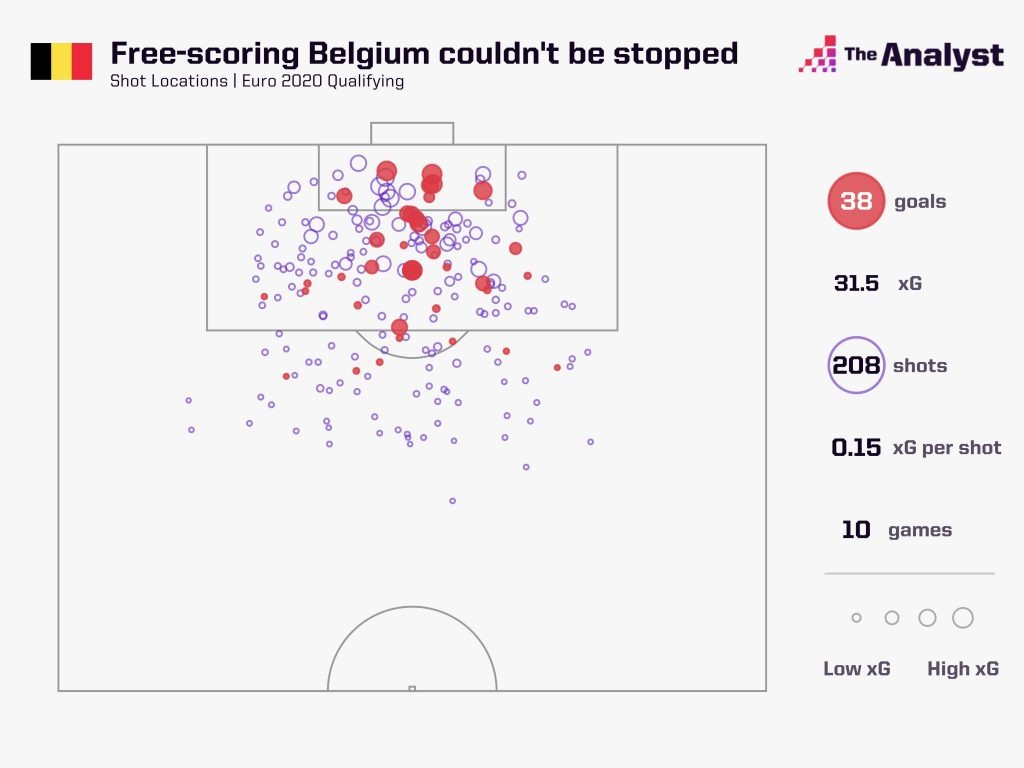
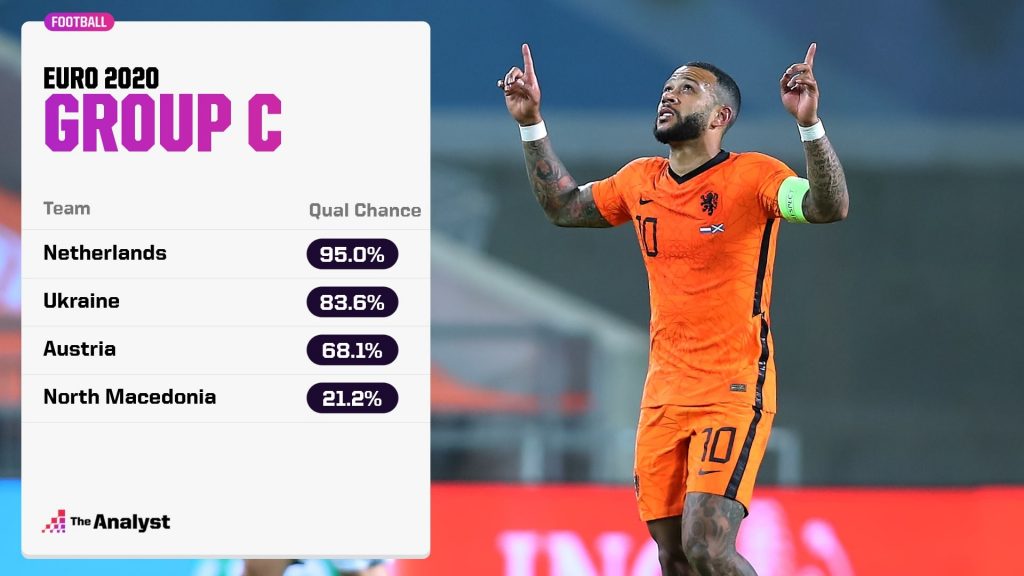
Group C – The Group of Lethargy
Marcelo Bielsa’s Leeds United have understandably received a lot of admiration for their high energy and energetic pressing. Group C is literally the opposite. The teams in this group rank poorly for nearly every proxy for pressing. They are the lowest for winning the ball back in advanced areas (7.6 high turnovers per game), second worst for allowing opponents passes before making a defensive action (PPDA of 12.4) and on average they start their sequences closer to their own goal than any other Euros group (42.3 metres).
Austria may feel hard done by with the ‘lethargic’ tag. A PPDA of 8.4 indicates they disrupted their opponents’ passing more than any other team going to the Euros. They can thank Andriy Shevchenko’s Ukraine for giving the group a bad name. In the game’s leading up to the tournament, Ukraine allowed their opponents nearly 19 passes before they made a defensive action (18.9 PPDA) and made the fewest high turnovers of all the teams competing this summer (65 in total or just five high turnovers per game).
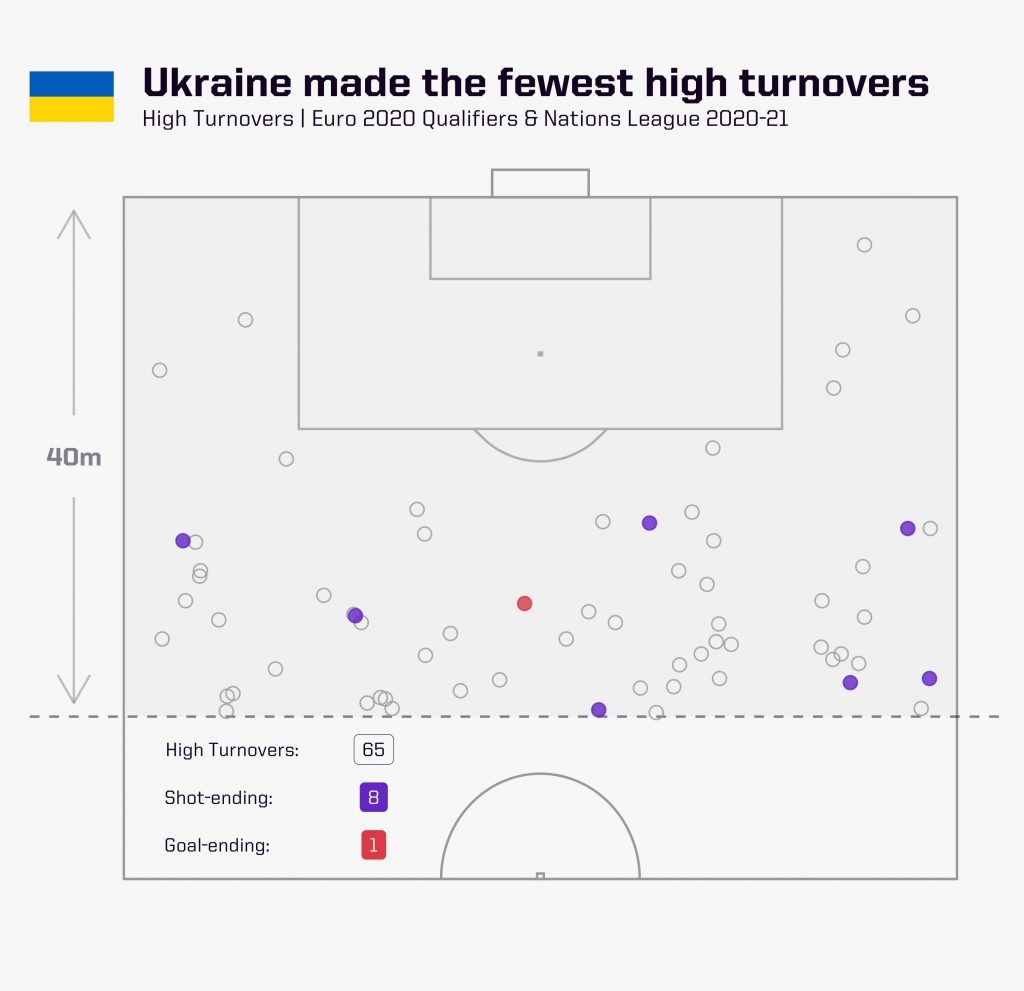
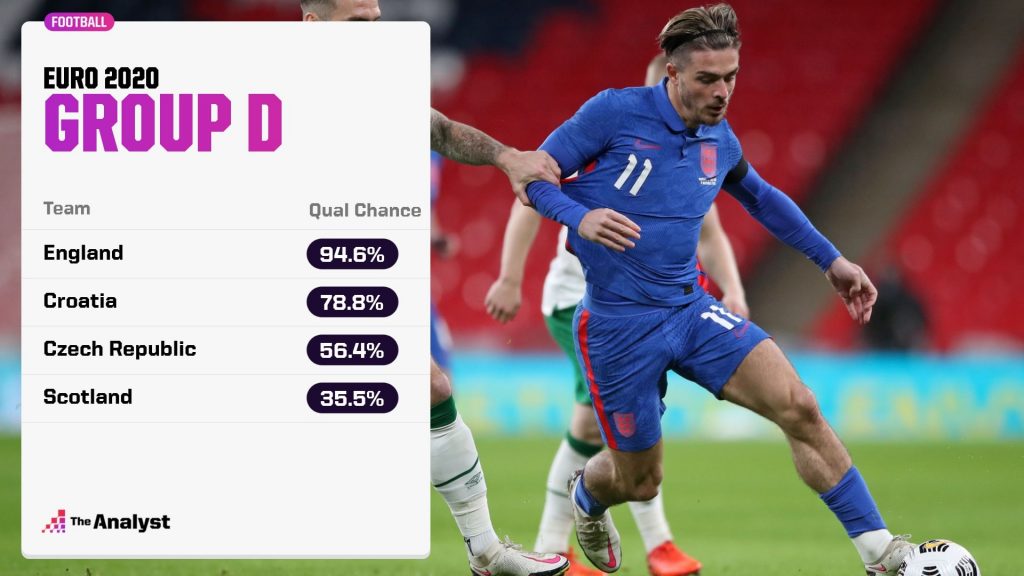
Group D – The Group of “On Yer Head!”
Now for the group that most of you have been waiting for. Containing the oldest international football fixture in the world and scores to settle from World Cup 2018, Group D is guaranteed some intense games. The veterans are Croatia (35 caps per player) and they may fancy themselves in a group against the three least experienced international squads in the tournament. Scotland average 19 caps per player, while England and Czech Republic average 21 caps per player. The squads in Group D have 1,060 fewer caps than those in Group B (2,487 vs. 3,547).
While Gareth Southgate’s young England squad is packed with creative talent, they may be met with far less exciting football. Group D sides attempted the most crosses (21 per game), the most long balls (60) and, as a result, the most aerials duels (35) in qualifying and recent Nations Leagues fixtures.
Expect attacks from all angles. Scotland were the biggest culprits for attempting long balls of all the Euros teams (69 per game), while the only team to attempt more crosses than Czech Republic (24) were Spain (27). The fact that England’s Dominic Calvert-Lewin can leap straight over the head of a 6-foot-1 centre-back may come in handy here if England need to resort to crossing or indeed defend an incoming barrage.
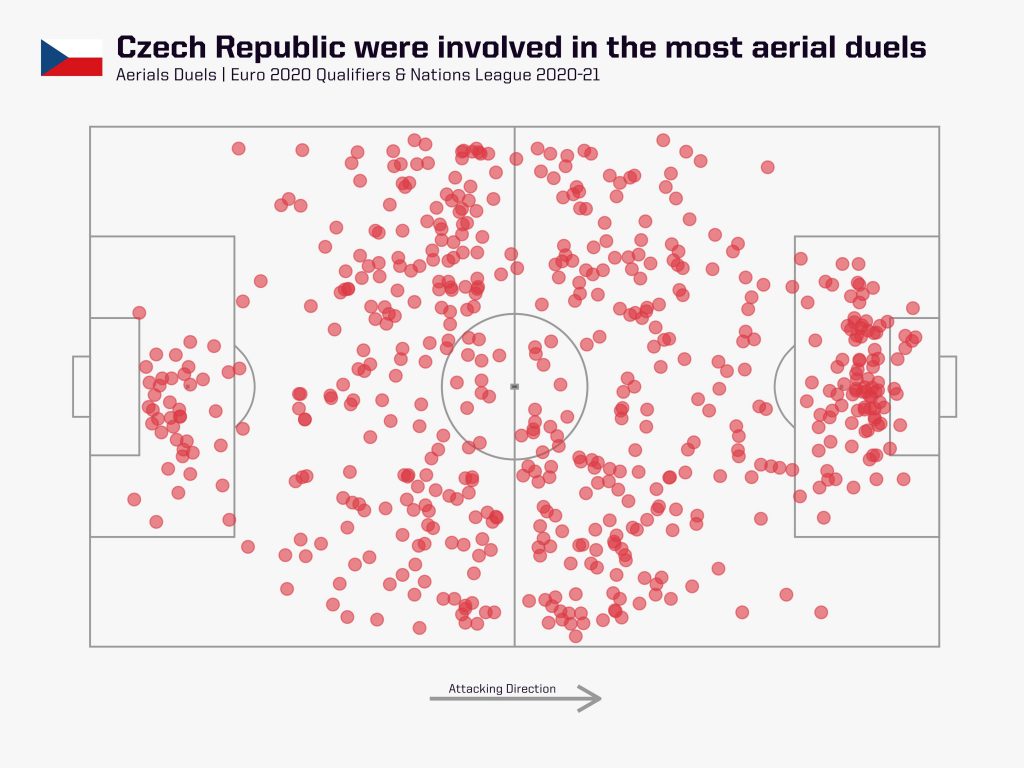
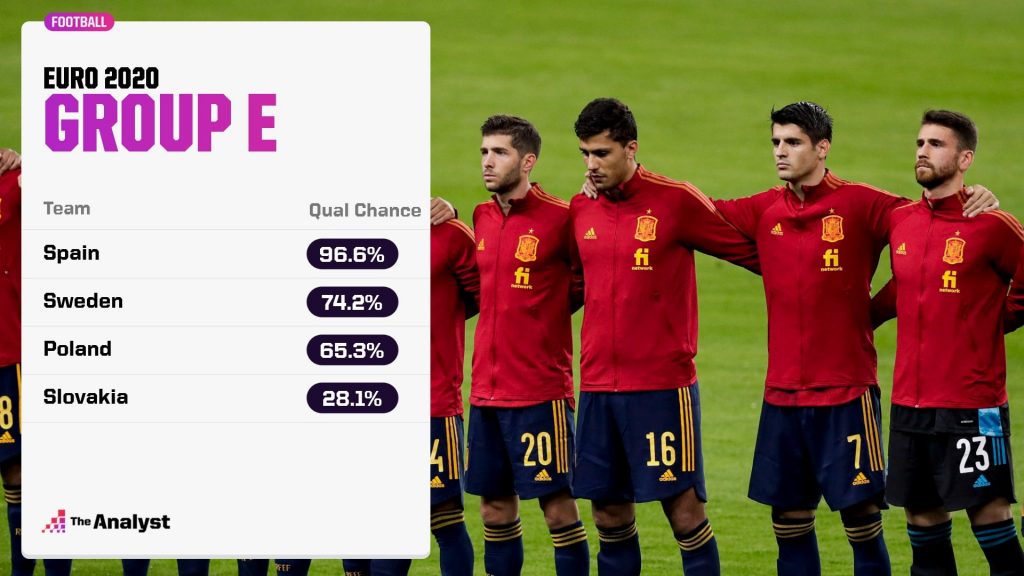
Group E – The Group of Goals (Again)
A group plagued by the uncertainty of positive COVID-19 test results, Group E will be hoping for high proficiency in both their vaccines and their backlines. After leaving Sergio Ramos, the most capped player in the history of the Spanish national team, back at home in Madrid, Spain may be worried to hear that the defensive numbers don’t look too favourable for the teams in Group E.
Group E teams conceded the highest-quality chances per game, in terms of expected goals (1.25 xG conceded per game). The fact that they conceded fewer actual goals per game (0.98) may provide the teams with a false sense of security.
Sweden and Slovakia have the most cause for concern. Both teams conceded 1.38 goals per game but were expected to concede more (1.48 and 1.67 respectively), figures that ranked in the worst four teams at the tournament in both categories.
These probably aren’t the numbers that the Group E teams want to hear ahead of facing Poland’s Robert Lewandowski, who broke the single-season goals record in the Bundesliga this season with 41 goals.
While Spain are tarnished with the same brush as their group rivals here, their outlook may not be so bad. Spain conceded 0.5 goals per game in the lead up to the tournament, a tally bettered only by Italy (0.38 goals per game). Facing some leaky defences, maybe it’s a chance for Spain’s Álvaro Morata to fill his boots and prove the doubters wrong?
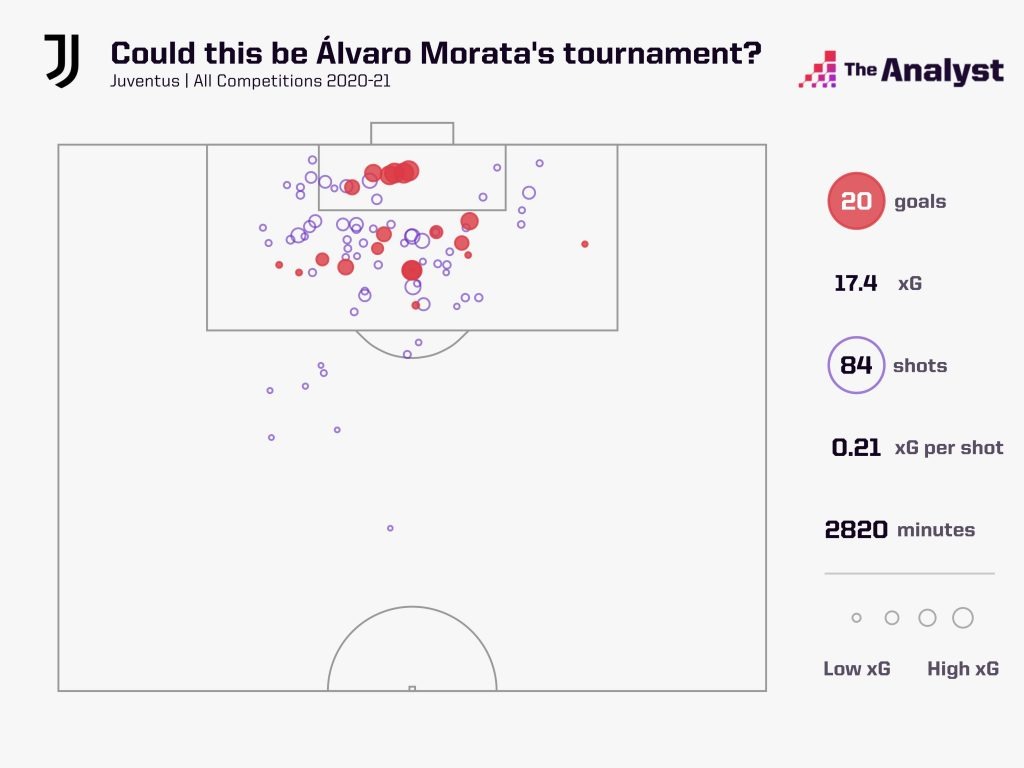
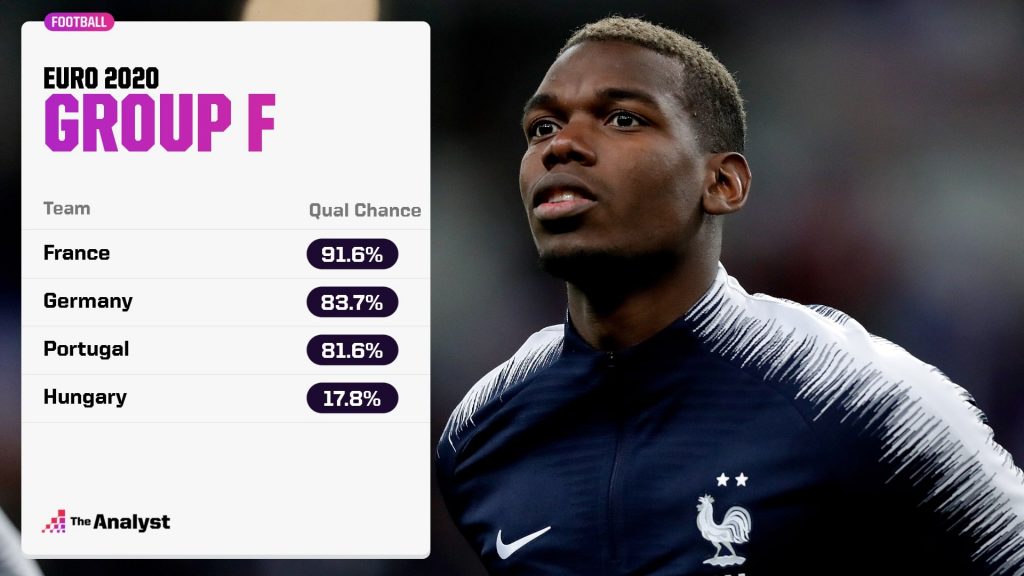
Group F – The Group of Death … by Aging?
The group of death? Trust the aging process more like. Containing three of the top-five teams most likely to win the tournament, according to Stats Perform’s Euro Predictions, it is no surprise that this group is receiving a lot of attention. For the same reason, it’s also not surprising that this group dominates the core stats, taking the most shots (16 per game), completing the most passes (519) and dominating possession (58%).
For a group that contains two nations that just contested the 2021 Euro Under-21 final (Germany and Portugal) and can call upon an excess of youth talent, it may be surprising to find out that Group F teams have opted for age and experience.
On average, the Group F teams boast the second-oldest squads going to the tournament (average tournament starting age of 27.9) and the second-most experienced squads in terms of caps (33.5 average caps for per player).
With France, Germany and Portugal in the same group, it isn’t surprising that the Group F squads also boasts the most international goals (542) between them. You could remove Germany’s Thomas Müller (39) and France’s Kylian Mbappé’s (17) international goals and they would still rank top.
France’s incredible strength in depth is underlined by the fact that Mbappé (22 years old) is the youngest player that the World Cup 2018 champions are taking to the Euros this summer. Every other team at the tournament has taken a younger player than France. At the other end of the age scale, Portugal are taking the oldest outfield player of the tournament (Pepe, aged 38) and boast two of the three most-capped international players in Cristiano Ronaldo (174 caps) and João Moutinho (130 caps). For those who like classic names in classic games, then this is the one to watch.
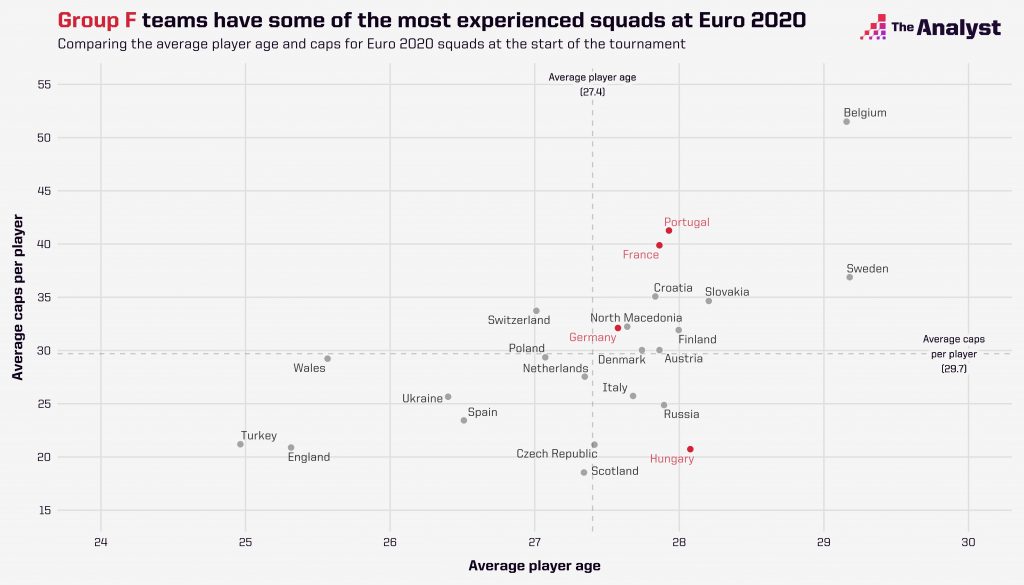
Design by Matt Sisneros.
Enjoy this? Subscribe to our newsletter to receive exclusive content every week.
